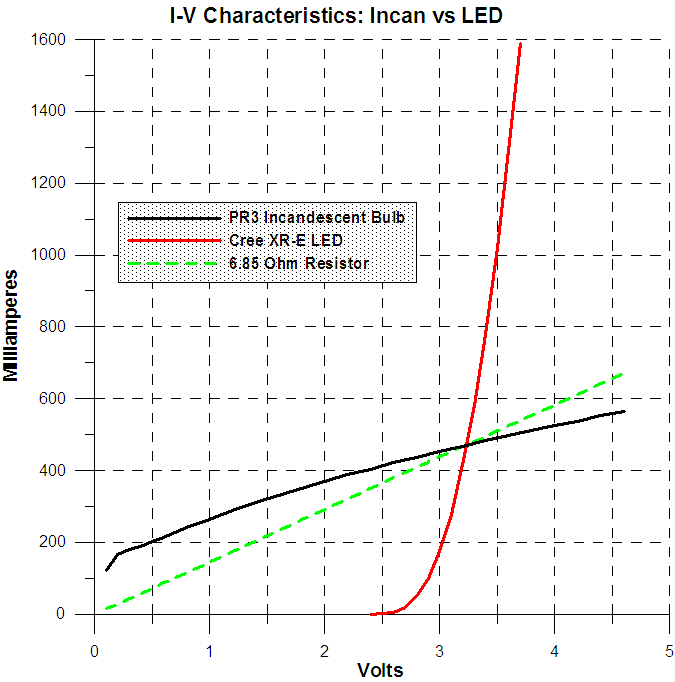Ive been looking at xitanium data sheets. Their naming and models are very confusing!
We will ignore the constant voltage ones, which are intended for strips etc and stick to the CC LED drivers.
HOWEVER this is where it gets confusing:
The CC ones usually have a max voltage output of 24Vs. Thats why in their circuit diagrams you see a maximum of 6 LEDs in series for each leg. BUT in some datasheets there is no minimum voltage specified, and in other
datasheets, some of them have a minimum voltage output of 14Vs. However, in this example, the circuit diagram sez you can run it with only one led on each leg. Which would mean each led receiving 14Vs! Instaboom time indeed!
Can anyone who has experience, shed a light on this type of situation?
The more I look into xitaniums, the more possibility I see, for example the highest number of leds per driver I found, at 54! However their product range is very confused and badly presented.
I think you're misunderstanding how a constant current source works. If I'm wrong, I apologize for the unnecessary posting. I remember a very long time ago having a lot of trouble getting the hang of current sources, so it's easy to understand when others do.
First a brief review of a constant
voltage source, since most people are more familiar with these than constant current sources. A perfect, ideal constant voltage source would produce a constant voltage across any load. The current is determined entirely by the effective resistance of the load, and our perfect source can deliver whatever current is necessary to make the voltage the correct value. In practice, a constant voltage source has a
current limit -- the maximum current it can deliver. The power it delivers is the voltage times the current, and a real source can deliver only so much. So a real voltage source always has a specification telling the maximum current it can deliver. As an example, if you connect the LED in the graph I posted to a constant 3.5 volt source, it would draw 1 A -- until it heated up, which would cause the current to rise a great deal. But the voltage would stay at 3.5 volts. Assuming, that is, that the source's current limit is greater than the current the LED is attempting to draw at 3.5 volts. But if you connect the 3.5 volt source to a 0.001 ohm resistor, it wouldn't deliver 3.5 volts, unless it had a current limit of at least 3500 amps. Leaving the output short circuited won't result in the specified voltage, because getting that voltage would require the source to produce an infinite current. If you begin with a very low value resistor as a load, you'll get some finite current (less than or equal to the current limit) and almost no voltage. If you increase the resistor value, the voltage will increase. At some point, the voltage will reach its regulated value. The current at that point is the current limit for the source.
A constant
current source is just about the opposite in every way. An explanation of how one works can be done by little more than reversing the words "current" and "voltage" and "open circuit" and "short circuit", in the voltage source explanation: A perfect, ideal constant current source would produce a constant current through any load. The voltage is determined entirely by the effective resistance of the load, and our perfect source can produce whatever voltage is necessary to make the current the correct value. In practice, a constant current source has a
voltage compliance -- the maximum voltage it can deliver. The power it delivers is the current times the voltage, and a real source can deliver only so much. So a real current source always has a specification telling the maximum voltage it can deliver. As an example, if you connect the LED in the graph I posted to a constant 1 A source, the LED voltage would be 3.5 volts -- until it heated up, which would cause the voltage to drop slightly. But the current would stay at 1 amp. Assuming, that is, that the source's voltage compliance is greater than the voltage across the LED when it has 1 A of current through it. But if you connect the 1 A source to a 1 kohm (1,000 ohm) resistor, it wouldn't deliver 1 amp -- unless it had a voltage compliance of at least 1,000 volts. Leaving the output open circuited won't result in the specified current, because getting that current would require the source to produce an infinite voltage. If you begin with a very high value resistor as a load, you'll get some finite voltage (less than or equal to the voltage compliance) and almost no current. If you decrease the resistor value, the current will increase. At some point, the current will reach its regulated value. The voltage at that point is the (maximum) voltage compliance for the source.
So you see, the output voltage specification of a current source isn't a voltage it will force across the load -- it's the minimum, maximum, or range of output voltages (which are dictated by the load) over which it will produce its specified current. The current source won't force the LED to have any particular voltage across it -- the LED itself determines what voltage it will have, given the supplied current.
Both current and voltage sources (real ones, that is, not ideal ones) have some limitation on supply voltage as well, and often there's a limit on the maximum or minimum voltage between input and output. These are dictated by the circuit design. Outside those limits, either the circuit will fail to deliver a constant current or voltage, or it'll be damaged.
c_c


